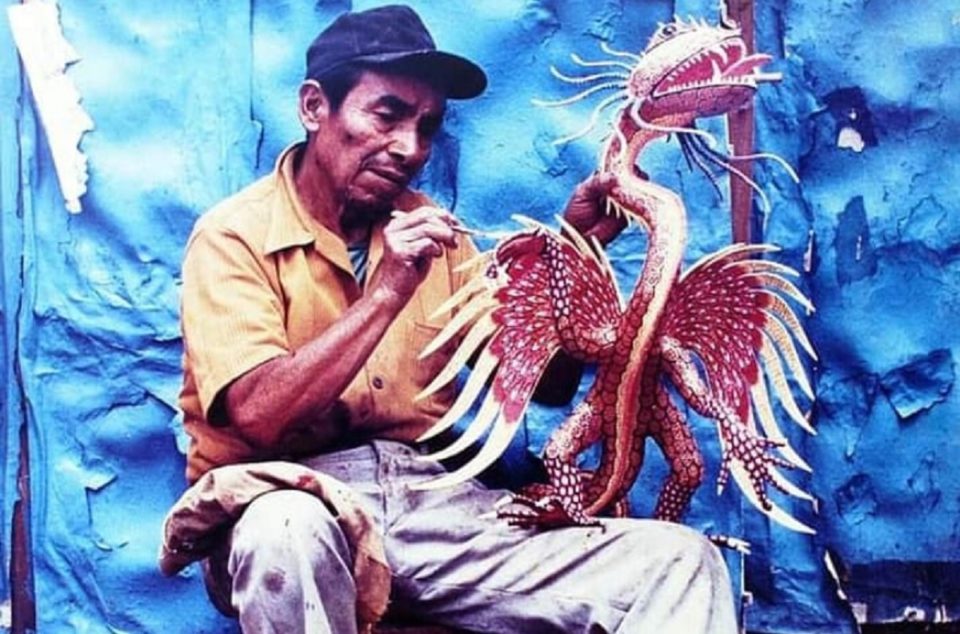Pedro Linares Lopez was a well-known Mexican artist, and on June 29, 2021, Google Doodle commemorated his 115th birthday. Lopez was noted for his bizarre animal sculptures known as alebrijes. Lopez died in 1992, but his family continues to promote his work. Pedro’s alebrijes are sculptures of strange animals fashioned from various animal body parts, such as a camel head with feathers or a tiger head with a bull’s horn and reptile legs. In reality, no two alebrijes are similar in appearance. According to the official site of Google Doodle,” His peculiar yet playful animal sculptures known as alebrijes are beloved worldwide as unique products of Mexico’s folk-art tradition. … Thank you, Pedro Linares López, for showing us the power of imagination!”
Fun facts about Alebrijes creator Pedro Linares Lopez
Emily Barrera made the doodle for Pedro Linares Lopez’s work.
Pedro offered his invention, alebrijes, to his country to commemorate them, according to doddle maker Emily Barrera, by combining numerous animal body parts such as a reptile’s body, and crocodile legs, bat wings, ox horns, and so on. This results in a one-of-a-kind creature that’s also fascinating.
Pedro Linares Lopez began his career as an artist when he was 12 years old.
Pedro Linares Lopez was born on June 29, 1906, in Mexico, to parents who were also painters in the nineteenth and twentieth centuries. He, like his forefathers, began working as an artisan at the age of twelve. During the Catholic Easter season in Mexico, he began creating figurines known as Judas, which are formed of cartoons.
Pedro Linares Lopez asserts that he was inspired to develop alebrijes by strange creatures from his fever dreams.
Pedro was unwell in the 1930s and fell into a restless dream. He saw strange creatures and yelled alebrijes, which is a crazy expression. When he recovered, he created sculptures based on visions he had during his illness. Pedro Linares Lopez improved his designs by adding more colours and combinations such as eagles, reptiles, lizards, and bugs after the eccentric sculptures became popular.
Pedro Linares Lopez’s alebrijes are documented in a film.
Pedro Linares’ work enchanted Judith Bronowski, a filmmaker. She was so moved by the Mexican artist’s work that she created and produced a film about it in 1975.
In 1990, Pedro Linares Lopez was awarded the Mexican National Prize for Arts and Sciences.
Pedro Linares Lopez was given the Mexican National Prize in Arts and Sciences in popular art and traditions just two years before his death at the age of 85.
Pedro’s children and grandkids continue using his artistic legacy and distinctive style.
Pedro’s children and grandkids are following in his footsteps, just like he did with his parents and grandparents. They keep making artwork following his imaginative style and exhibit it in galleries across the world.
Fun facts about Alebrije of Pixar’s Coco
Alonzo Martinez used Pedro’s alebrijes in Pixar’s Coco in the form of Pepita.
Coco is a Disney Pixar film that is among the most popular. Pedro Linares Lopez’s sculptures, which he initially produced in the 1930s, were beautifully featured in the film. Alonso Martinez, a character animator at Pixar, grew up loving alebrijes and has a vast collection at his studio. In the film Coco, he used the alebrijes patterns.
Alebrijes used in the movie are Spirit guides in Coco.
The character Martinez developed in the movie does not connect to any mythological character but acts as a spirit guide. The character’s name is Pepita who is vibrant, huge and fascinating with talons and large eagle wings. The alebrijes has a tiger’s arms and head while her tail looks like that of a lizard.
The alebrijes used in the movie look like illuminated creatures.
Alebrijes have witnessed dramatic changes over time, including the addition of LED lights to alebrijes, which appear to be both inventive and lighter. The figurines are built with moveable metal frames attached to LED lights and fabric or plastic skin rather than cartonera. The first procession of illuminated alebrijes took place in Colonia Roma in 2014. As seen in the movie, the spirit guides were given a fluorescent glow with glowing eyes and wings. The Pepita illuminated the environment as well as castes light and colours onto other characters.
Pepita is a combination of alebrijes wood carving and realistic animals.
The Pixar movie’s alebrijes were inspired by wood-carved alebrijes and realistic animal features. A woodcraft element was present in the character, but she also had organic and flesh-like aspects.
